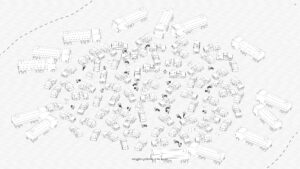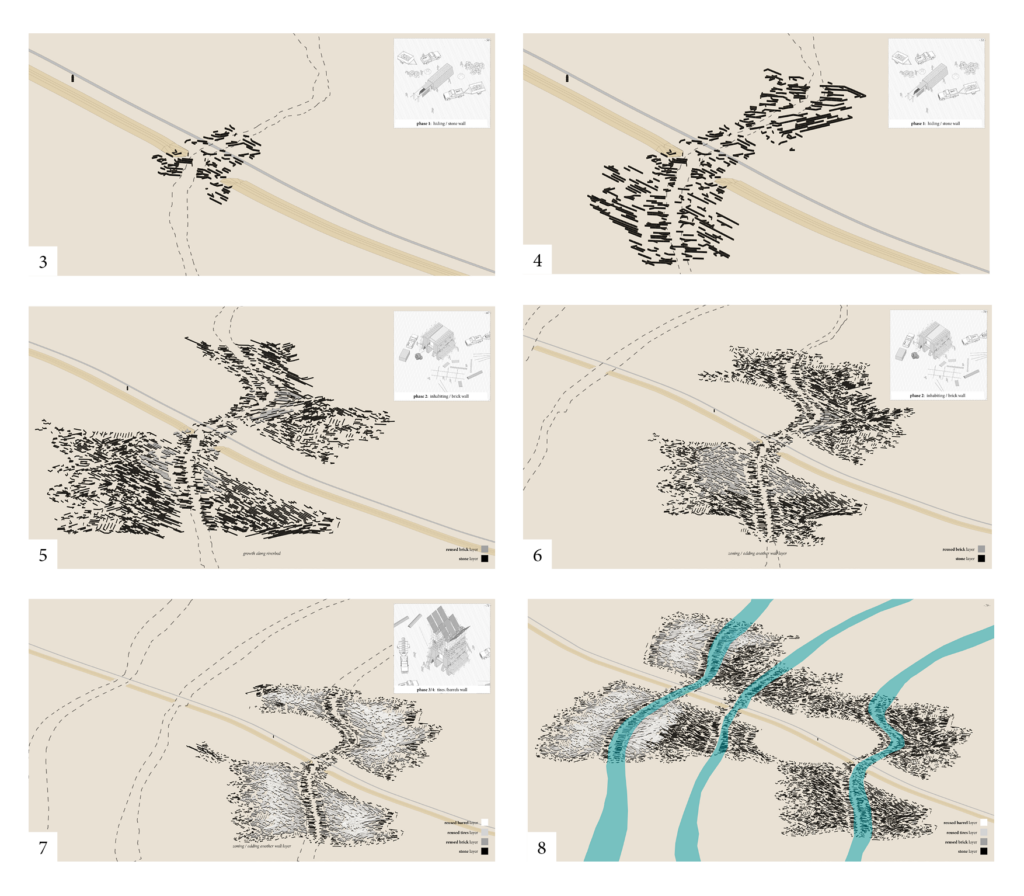THE TERRITORIAL GROWTH
Concerning the territorial scale, smugglers choose a location for their settlement, observing the cycle of periodic rivers that penetrate the border fortifications. Following dried-out riverbeds, they reach the fortification gap at the border and commit trade with smugglers from the other side. (1) Naturally, the location becomes the origin of a future settlement. Initially, spontaneous facilities emerge, such as mobile pit toilets, hiding places, or trading lounges. (2)


Willing to settle down, smugglers raise the stone hideouts to store their goods. (3) Gradually, the structure organically grows along the riverbed, spreading on both sides of the border. (4) After several years of development, the settlement strives for more space. It, therefore, broadens away from the riverbed and liberates space for proper habitation. This is when the adequate layer constructed on the already existing stone base arises. Smugglers seek shelters that provide them comfort and safety while retaining the necessary sense of anonymity. (5) Therefore, they add the rest of the layers in the very central, most dense areas of the settlement. (6) That way, these areas form the highest, most dense, and obscure sectors filled with refuge-like shelters. Gradually, these transform into more private premises. At that stage of development, the settlement reaches its maturity and eventually becomes a proper desert village. (7) Eventually, after operating for years and giving fruitful benefits from trade to all actors, the village eventually gets the recognition of authorities. When the structure becomes unusable, smugglers move their structures and find another gap in the border. The entire process perpetuates over and over again. (8)

